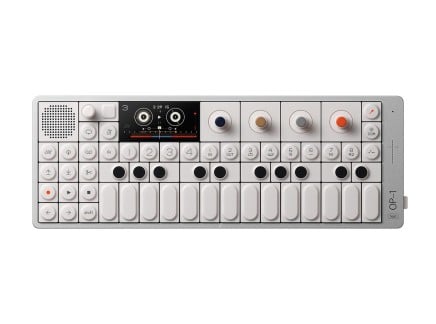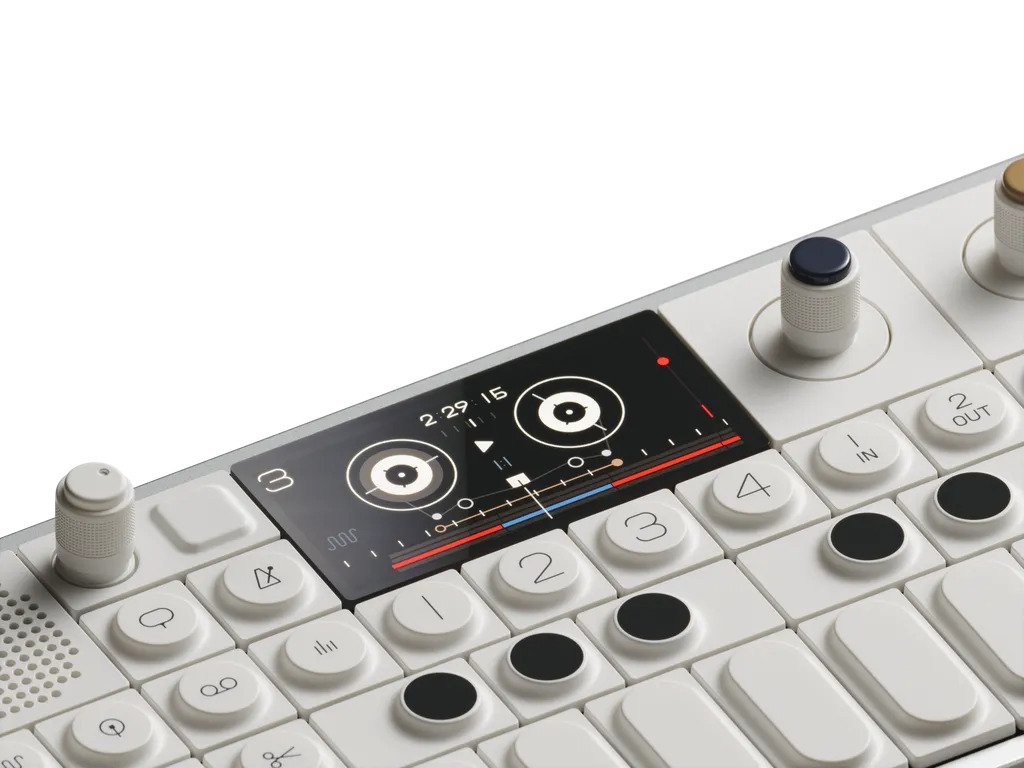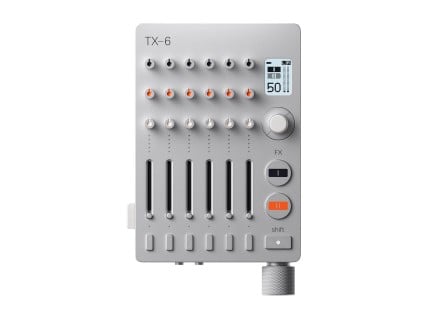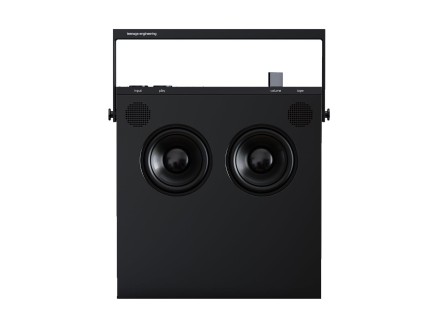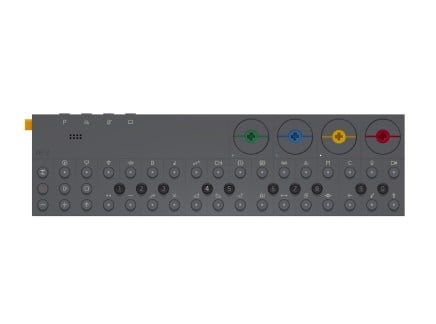Released earlier this year, Teenage Engineering's OP-1 Field improves upon nearly every aspect of the original OP-1: updated hardware, more powerful synthesis capabilities, increased flexibility in sampling and recording, and much more. We were quite surprised to see it launch at Superbooth 2022, given that the TX-6 Field Mixer had only been revealed less than a month before.
OP-1 Field elevates everything that was loved about the original to a new level, packs in a number of new features, and lays the groundwork for exciting new things on the horizon. If you've followed the OP-1 Field and feel one way or the other about it but still have some curiosity over the hype and appeal, be sure to keep reading this article for some insights.
Teenage Engineering's OP-1: A Modern Classic
Long before Pocket Operators, TX-6, and, of course, the OP-1 Field, Teenage Engineering debuted their first product at the start of the last decade: the original OP-1. The OP-1 hit the market in 2011—for context, that's the same year as Elektron's Octatrack, which has its own legacy as a self-contained hardware hub for electronic music. Before that, the only other somewhat comparable products would be keyboard arrangers/workstations or one of AKAI's various MPC models…at least as far as all-in-one music production boxes are concerned.
But what the OP-1 offered was wholly unique at the time. It encapsulated a sort of virtual recording studio, packed full of synthesizers, samplers, and effects that could controlled with internal sequencers and recorded to a four-track virtual "tape deck." And that's all contained within a slim, aluminum enclosure with battery power and internal speakers. It's easy to see why basically everyone thought that was, well, pretty cool.
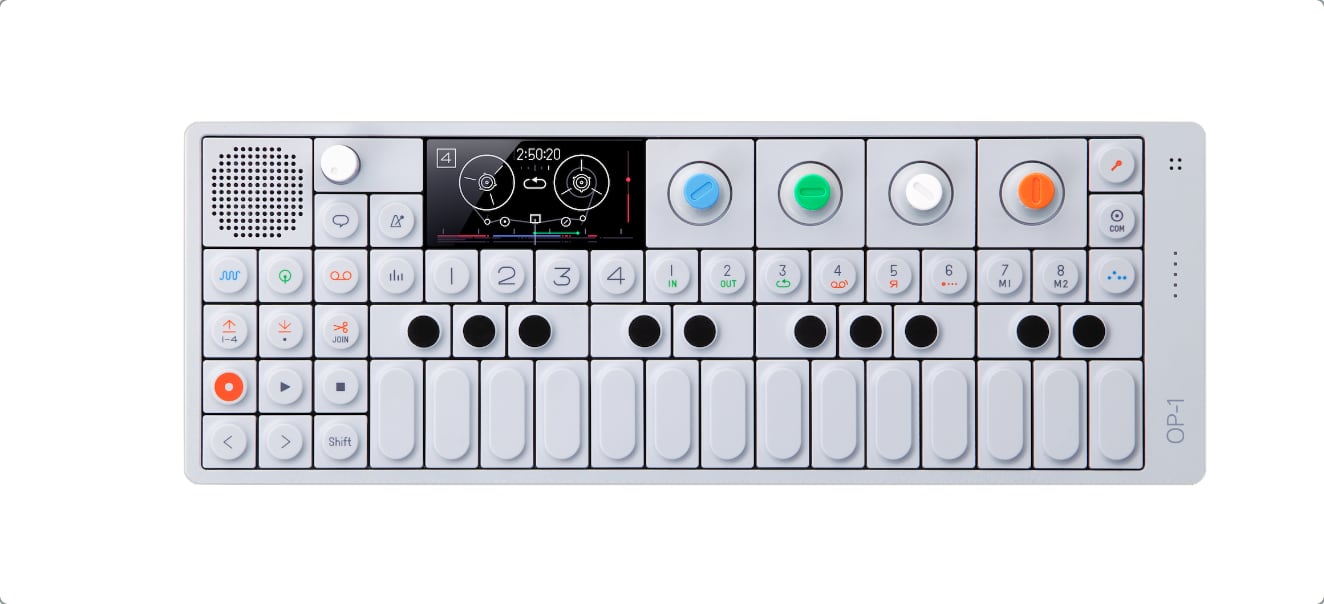
Compared to DAWs or other feature-packed hardware samplers and keyboard workstations, the OP-1 made the point to package all of the things that it could do together into an elegant, cohesive, and approachable design. Parameterization was straightforward rather than complex, and often paired with evocative visuals on the colorful display when making adjustments. Even with no prior experience in synthesis, you could pick up an OP-1 and start tweaking sounds without any intimidating terminology or sifting through overwhelming numerical values. All one needed to do was turn the blue, green, white, and orange encoders and corresponding elements would change visually and sonically, depending on the current page of parameters.
What sounds can the OP-1 make? Its synthesizer engines run the spectrum from streamlined DX7-style FM and virtual analog to physical modeling and noise synthesis derived from the OP-1's individual CPU ID. But that's only the beginning—you can also sample sounds from the outside world via the built-in mic, line input, or internal FM radio to fill out your desired sound palette. This also includes the ability to resample the OP-1's internal sounds after you've applied effects.
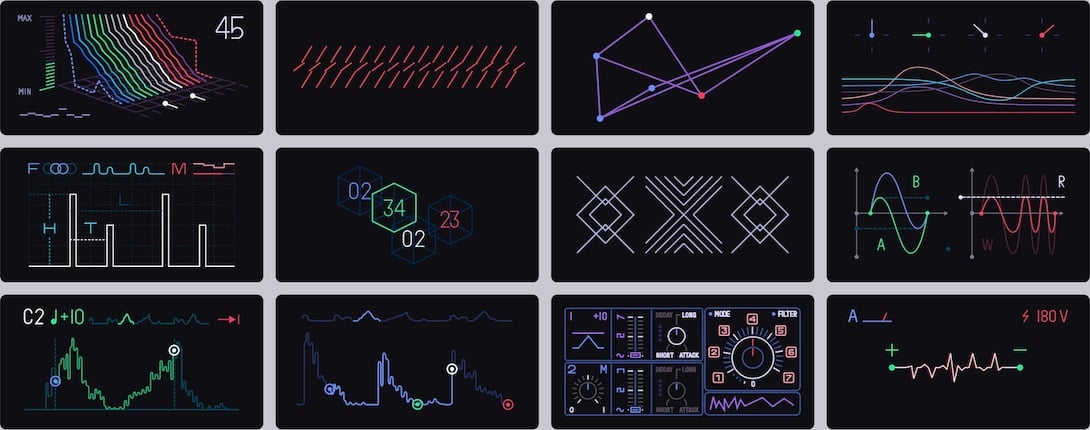
The OP-1's sampler also shines in its drum modes. Rather than playing back one sample with its pitch transposed across keys, you can trigger different sounds on each note to achieve full kits or layered textural accompaniment. Best of all, whether you're working in drum or synthesis mode, you can use any of the OP-1's many sequencers to trigger notes automatically. There's traditional options like Arpeggio and Pattern, but others like Tombola and Sketch offer more atypical note gestures that aren't necessarily constrained to tempo.
While you can only play one instrument at a time on the OP-1, its internal four-track tape lets you build up songs and play along with yourself. When you've created a musical form that you like, you can even mix down the four tape tracks to a single stereo audio file, and export to a computer via USB. But the tape is a performative tool as well—eight different so called "tape tricks" allow for momentary reverse, beat-repeat, and tape-stop effects to be applied to tape playback. Tape tricks will even be recorded to final bounces, along with any other live playing from synths, drums, or external audio sources.
We could go on about other ways to use the OP-1—there's simply so many things that it can do. While it seems that so many companies are putting out portable and battery-powered devices these days, over ten years ago it was the OP-1 that set the bar and really pushed the boundaries of what a compact electronic instrument could do. Say what you will about its sound engines or aesthetic choices, but it's hard to deny the OP-1's influence across the synthesizer and music technology industries. Continuing that legacy, OP-1 Field carries the torch of portable synth/sampler/recorder into the future.
OP-1 Field: Updates Galore
Given the OP-1's immense legacy and reputation, Teenage Engineering left no stone unturned when updating to the new OP-1 Field version. Their website boasts that the OP-1 Field brings 100 new features both large and small to the platform—that's a lot of stuff. This includes everything from improvements to the battery life, internal speakers, and audio quality to technical updates like USB-C connectivity, Bluetooth BLE for MIDI connections, and fully stereo synthesis engines, effects processing, and recording to tape tracks.
Physically speaking, OP-1 Field certainly maintains a strong resemblance to its predecessor, but on closer inspection the differences become clear. The Field is both lighter and slimmer, but still feels well-built and substantial while holding it in your hands. On the rear, you'll find two Velcro rings, both for attaching the OP-1 to things like pedalboards or affixing things to the OP-1 itself. There's even a fun paddle power switch on the side now instead of a simple slider switch—if you're worried about accidentally turning off the OP-1 Field, there's a system setting to delay powering down should the switch be accidentally switched off.
As far as aesthetics are concerned, the screen has been totally redesigned for enhanced fidelity, and a new color palette has been adopted. Darker blue, ochre, gray, and orange now adorn the encoders and display, but the same easily identifiable relationship between parameter, sound, and visual element remains in place. With the new screen, sample editing now offers more precision and clairty, helpful for trimming off the gaps before a transient or fine-tuning your single-cycle waveforms.
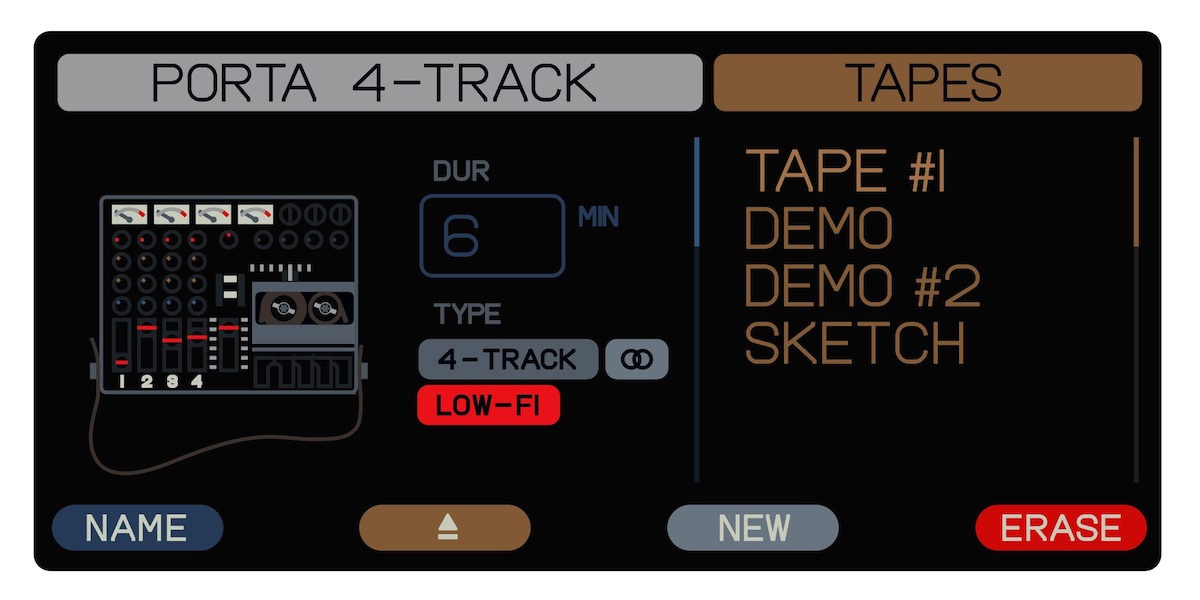
One of the most welcome updates to the OP-1 Field is enhanced processing power, which benefits nearly everything that it can do. Already packing a punch at launch, there's a new Dimension synth engine and a reverb effect called Mother that offer some of the best synthesis sounds to ever come out of the OP-1. Additionally, the capabilities of Tape Mode have been greatly expanded. Not only do each of the four tracks now support stereo recording, but now eight different tapes can be stored in memory, allowing you to revisit multiple song ideas as inspiration strikes. But there's also four different Tape styles, emulating various flavors of fidelity that come along with various audio recording platforms: Studio 4-Track, Vintage 4-Track, Porta 4-Track, and Disc Mini.
But possibly the biggest thing that the OP-1 Field update brings is the potential to push the OP-1 into totally new directions. Though it sports a single USB-C port, multiple functionalities become apparent as you explore the OP-1 Field's various modes. For example, you can sample incoming audio from a connected USB device, like a TX-6, mobile phone, or any USB-C audio interface. That same USB port can also be used to transfer files in and out of the OP-1 via a connected computer, or connect an external MIDI controller. If you prefer the wireless lifestyle, Bluetooth BLE allows for remote MIDI connections, and you can even broadcast audio over FM radio. These are all new ways to interface with the outside world, and offer more ways to incorporate the OP-1 Field's workflow into a variety of scenarios.
Is the OP-1 Field Worth It?
We'll be completely honest: the OP-1 Field isn't cheap. Price is one of the very few objective qualities about any musical device with otherwise subjective features. With its price tag, the Op-1 Field deserves some serious thought before dropping some of your hard-earned cash on it.
So is the Op-1 Field worth the money? Well, the answer really depends on your style of writing and producing music. The OP-1 has always been a complete package of musical tools, with everything from sequencers, synthesizers, and samplers to effects processing and recording "tape" held within its interface. By design, Teenage Engineering emphasizes the OP-1's complete music production workflow as a key feature, and neglecting or ignoring any part of that may devalue its capabilities.
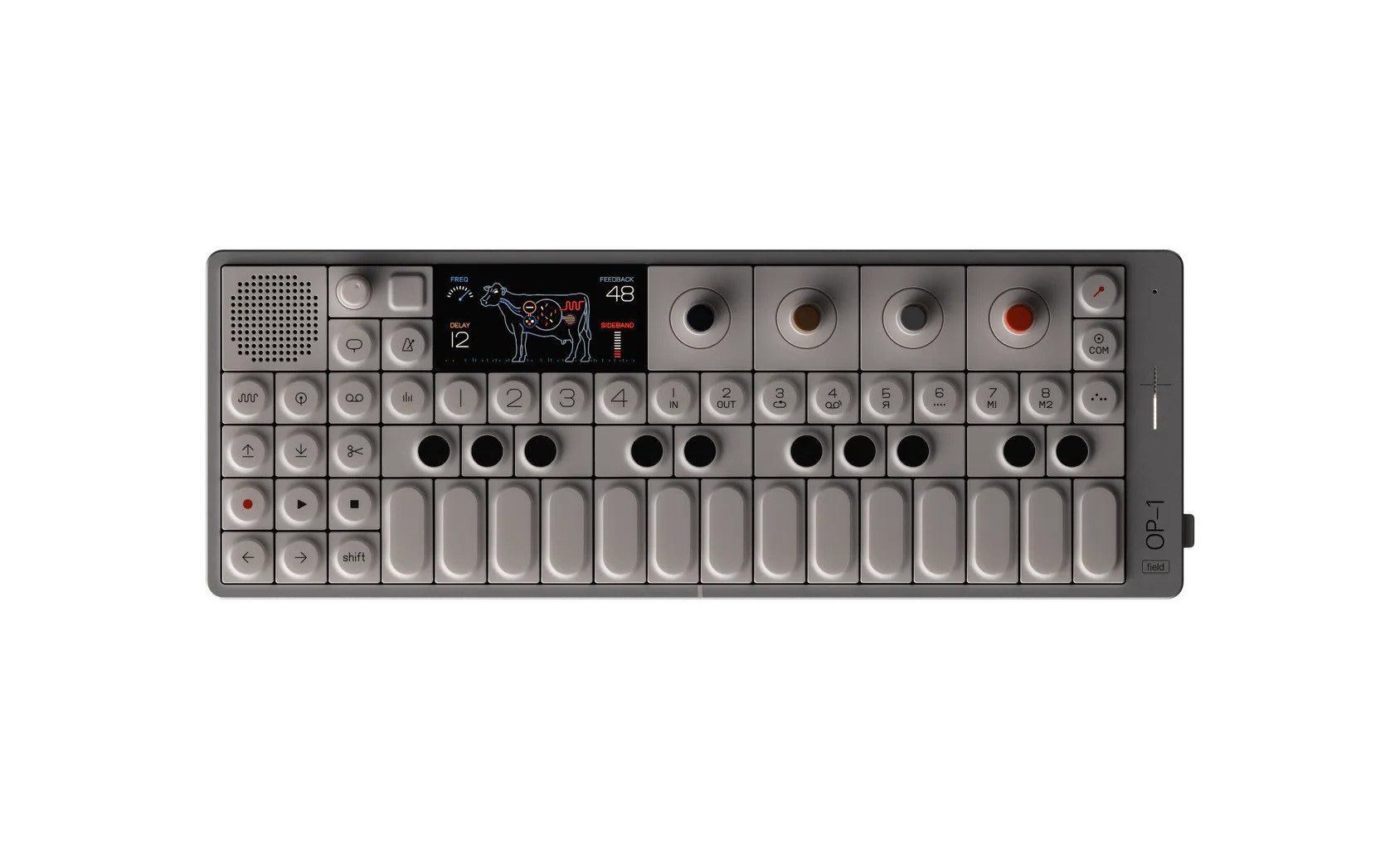
For example, if you're already equipped with a studio of cool keyboard synthesizers and don't feel that the OP-1 Field's sound engines would add much to your rig, that's totally fine. But remember that you're only considering one thing out of the many things that it can do. If you've already established a workflow that's more in line with traditional music production methods, it could be harder to justify incorporating the OP-1—again, that's totally cool, no single instrument is meant for everyone.

But if you're not bound to a single workflow, are intrigued to deep-dive into an all-in-one music device that's a different flavor from the Octatracks and MPCs of the world, or crave a full music production environment in a portable package that can follow you anywhere, these are areas where the OP-1 really shines. All that said, the OP-1 Field is more open to outside devices, whether its with the traditional analog audio I/O, Bluetooth MIDI, and USB audio or MIDI devices. Additionally, more devices are in development for the Field System that are sure to unlock even more creative opportunities.
Another thing to consider is Teenage Engineering's stellar history of not only supporting their products for years, but continuing to add features until the hardware is maxed out. The last major firmware update for the original OP-1 came out in 2021, after the device had been in production for ten years. In a time where new smartphone and computer models are consistently rolled out year after year, this uncommon dedication to both maintaining and updating hardware for a decade is admirable.
Even in the first six months of the OP-1 Field's production, TE has already offered six new firmware updates—and four of them introduced new features beyond just bug fixes. If you decide to hop in with an OP-1 Field now, you'll likely be in for more updates over the next several years.
Time to Take a Field Trip
Whether or not the OP-1 Field is for you, its influence on other portable instruments and music production workflows cannot be understated. We think it's neat that Teenage Engineering is allowing the concept of the OP-1 to evolve into a more modern and flexible form. And at the end of the day, it's just another option in the world of super cool electronic music tools. We're looking forward to seeing where the Field System goes from here, and the inspired sounds that come from musicians and artists that dive in headfirst.

